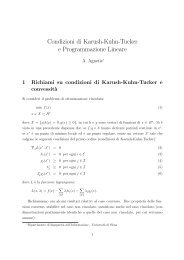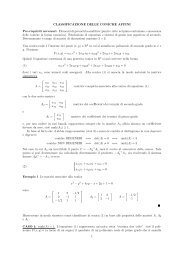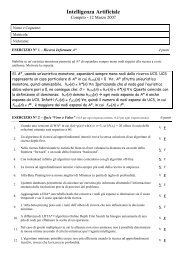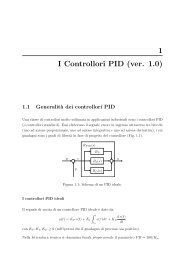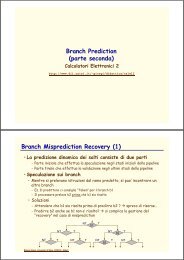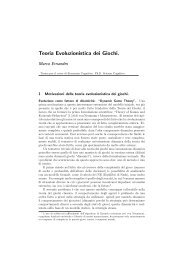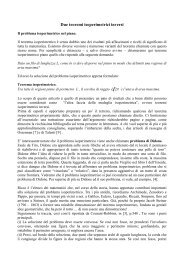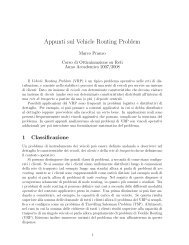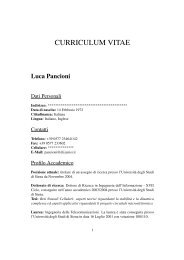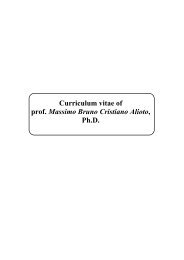Dispense del corso - Dipartimento Ingegneria dell'Informazione ...
Dispense del corso - Dipartimento Ingegneria dell'Informazione ...
Dispense del corso - Dipartimento Ingegneria dell'Informazione ...
You also want an ePaper? Increase the reach of your titles
YUMPU automatically turns print PDFs into web optimized ePapers that Google loves.
Facoltà di <strong>Ingegneria</strong> 36<br />
uno spettro S(f) tra (−B, B), come è schematicamente mostrato in figura<br />
4.2(a). Essendo s(t) un segnale reale, si ha:<br />
s(t) = 2<br />
B<br />
0<br />
|S(f)|cos(2πf0t − Θ(f))df (4.5)<br />
dove S(f) e Θ(f) rappresentano rispettivamente lo spettro di ampiezza e di<br />
fase di S(f). Il segnale modulato AM, y(t), può essere scritto nella forma:<br />
y(t) = V0cos(2πf0t)+k·V0<br />
B<br />
0<br />
<br />
<br />
|S(f)| cos(2π(f+f0)t−Θ(f))+cos(2π(f−f0)t−Θ(f)) df.<br />
(4.6)<br />
Lo spettro <strong>del</strong> segnale AM è quindi costituito (analizzando le sole frequenze<br />
positive) da una <strong>del</strong>ta di dirac a frequenza f0 con un valore pari a V0 e da 2<br />
due bande laterali, superiore ed inferiore, come mostrato schematicamente in<br />
figura 4.2(b). La banda di tramissione necessaria a trasmettere un segnale<br />
AM è quindi 2B, essendo B la massima frequenza <strong>del</strong> segnale s(t).<br />
Figura 4.2: Spettro <strong>del</strong> segnale AM: a) spettro <strong>del</strong> segnale modulante; b) spettro <strong>del</strong><br />
segnale AM<br />
4.1.3 Potenza <strong>del</strong> segnale modulato AM<br />
La potenza media, Ptx, necessaria per trasmettere un segnale modulato AM<br />
dipende dal segnale modulante. Applicando la definizione di potenza di un




